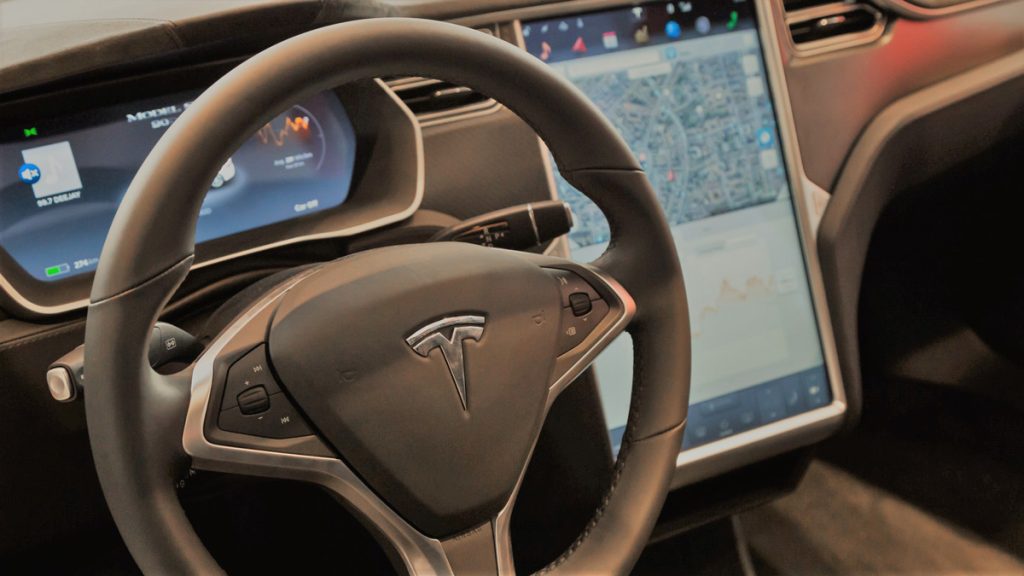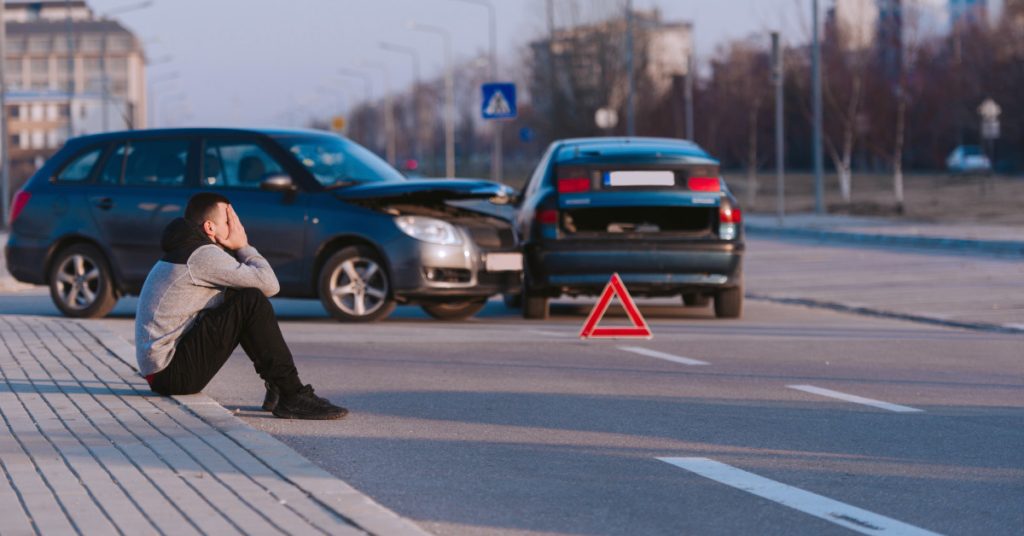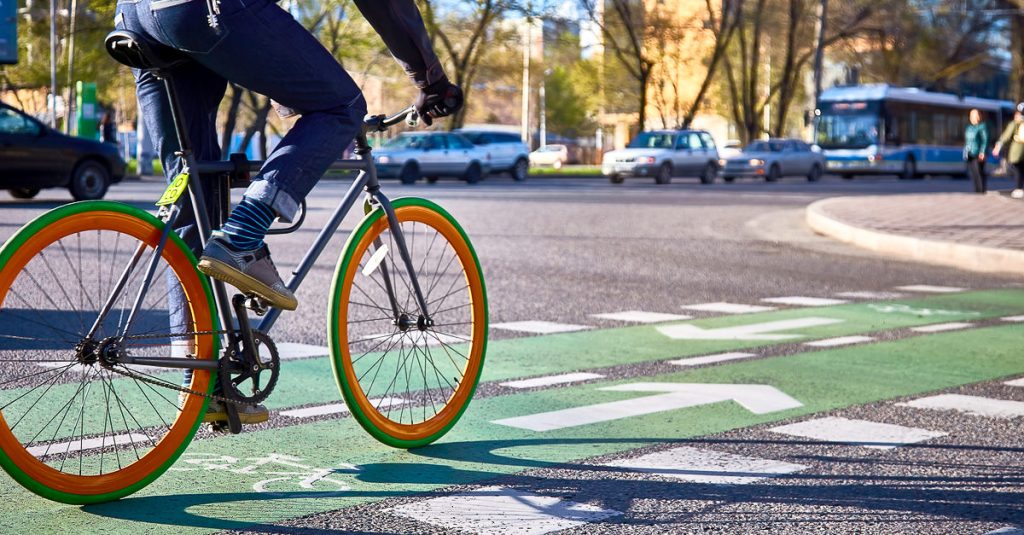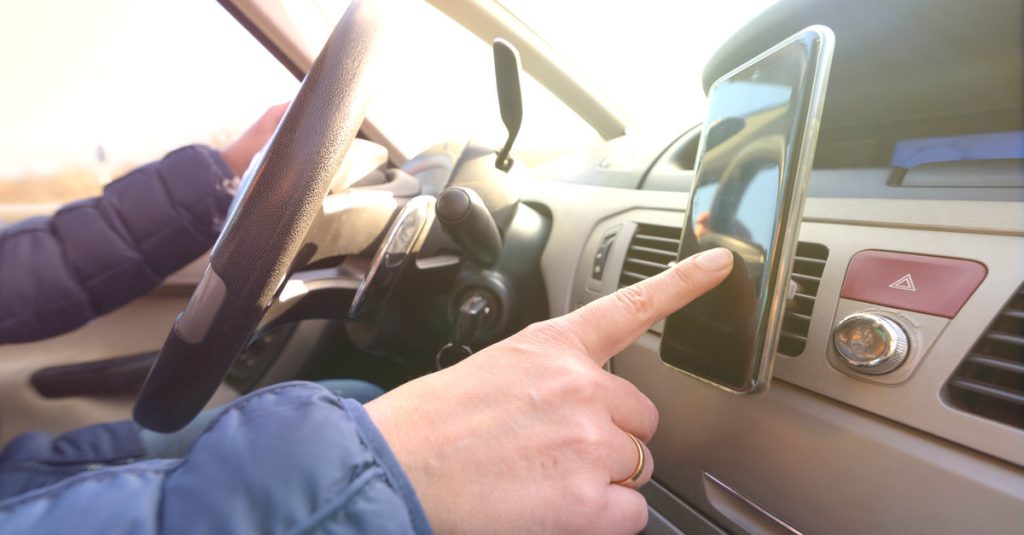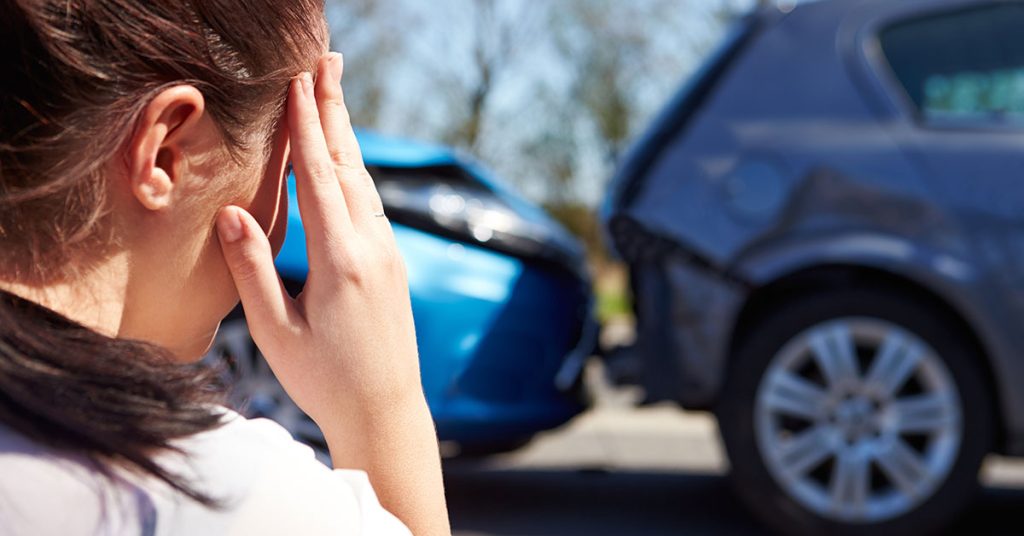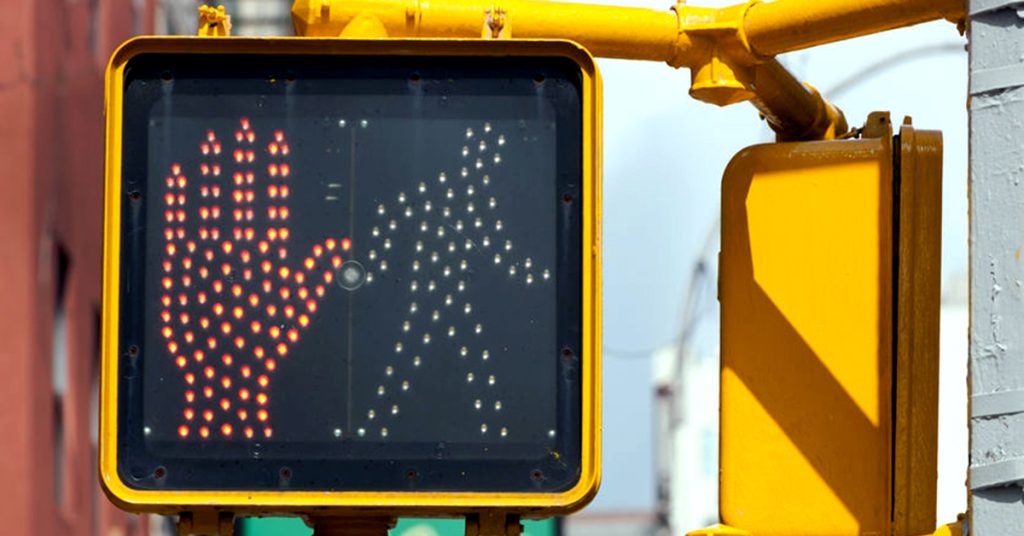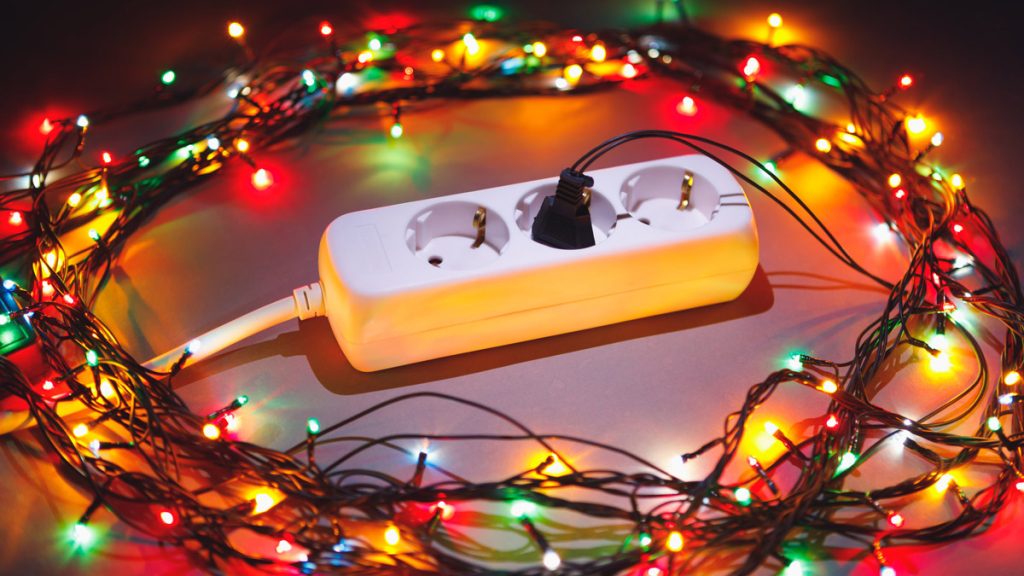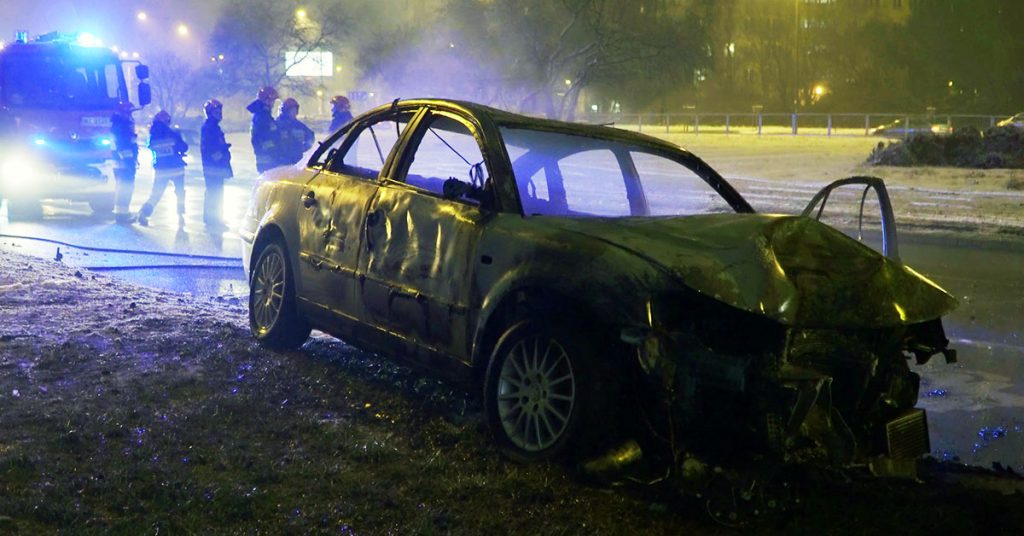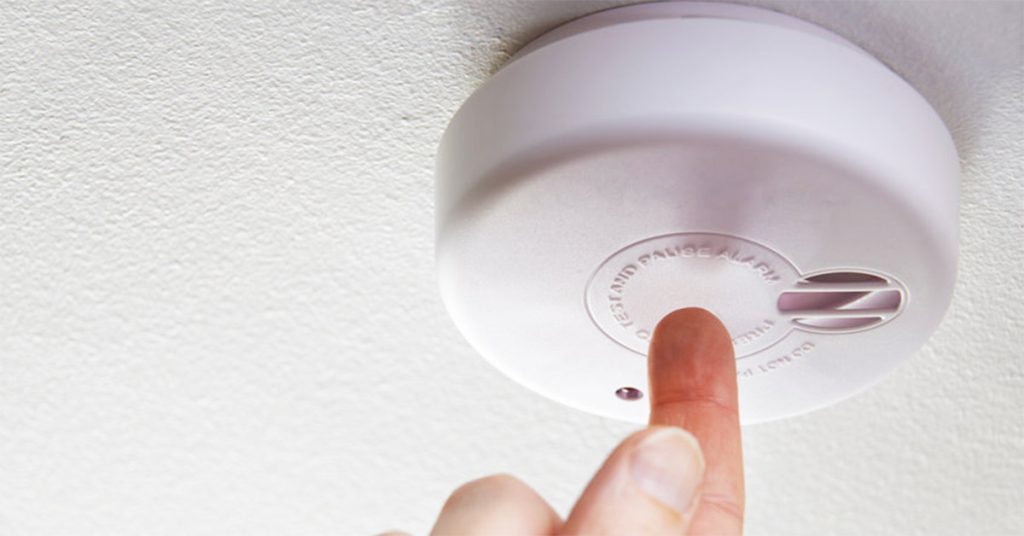Posts by Breakstone, White & Gluck
Tesla Has Highest Number of Crashes Involving Self-Driving Cars, Driver-Assist Systems, New Data Shows

New data shows self-driving cars and driver-assisted systems were involved in hundreds of car accidents over a 10-month period. Tesla vehicles were tied to 70 percent of these car crashes.
Days after expanding its Tesla safety investigation, the federal government has released 10 months of data showing nearly 400 crashes involving self-driving and driver-assisted vehicles, according to The New York Times. Tesla vehicles were involved in 70 percent of the self-driving and driver-assisted crashes.
Of 392 crashes, 273 involved Tesla vehicles operating with Autopilot, Full Self Driving or related features, according to the National Highway Traffic Safety Administration (NHTSA). Six people were killed while others were injured. The crashes ranged from serious collisions to fender benders or smaller incidents.
- Honda vehicles were involved in 90 incidents.
- Waymo, a driverless taxi service in Arizona, was involved in 62 crashes. The service is owned by Google’s parent company.
- The G.M. Cruise taxi service was linked to 23 accidents in the San Francisco area.
- Subaru reported 10 crashes; Ford, G.M., BMW, Volkswagen, Toyota and Porsche each reported 5 or fewer.
Last year, the NHTSA issued an order requiring automakers to report car accidents involving vehicles with driver-assist systems or fully-automated vehicles being tested on public roads. This is the first data release under the order and an NHTSA official cautioned the public not to make conclusions yet.
The data covers just 10 months, but provides no context on the total number of vehicles each manufacturer has on the road with automated technologies.
Tesla has about 830,000 vehicles with driver-assisted technologies on the road, according to The New York Times. But other companies, such as Ford and GM, also have technologies that allow hands-free driving in certain situations. They have sold fewer models.
In addition, automakers have long sold cars, trucks and SUVs with some level of driver-assist systems, such as cruise control or automatic braking when traffic ahead slows. With this data release, the NHTSA said it plans to keep collecting data on auto crashes involving these features and technologies, as a guide for future safety requirements.
NHTSA Expands Investigation of Tesla Autopilot Feature
The data comes as the NHTSA investigates years of car crash reports involving Tesla’s Autopilot feature. On June 9, the agency announced it was expanding the probe to include all four Tesla cars – Model S, Model X, Model 3 and Model Y – from 2014 and 2021, according to The New York Times.
The agency said it was upgrading its preliminary evaluation to an engineering analysis, a step required before a safety recall, according to The New York Times. The NHTSA has set a one-year timetable for the review.
The Texas-based company designs the world’s most popular luxury vehicles, many of which use the Autopilot technology to perform key aspects of driving, such as steering, accelerating and braking automatically within the lane. The NHTSA is investigating whether the Autopilot fails to prevent drivers from diverting their attention from the road and engaging in other unsafe behaviors.
This wouldn’t be the first Tesla recall. In November 2021, Tesla recalled almost 12,000 vehicles from its Full Self Driving beta test. This was a version of Autopilot designed for city driving. The company reported a software update could unexpectedly activate a vehicle’s emergency brakes.
Tesla Self-Driving Crash and Sleeping Driver Report in Massachusetts
Tesla crashes have made headlines across the country.
There was a bizarre story on the sleeping driver traveling in a Tesla vehicle on the MassPike back in 2019. A driver captured video of another driver and his passenger traveling in a Tesla vehicle in the next lane. Both were in a heavy sleep.
State Police called the behavior “extremely dangerous” and said the driver would be subject to criminal charges if they ever identified and located him. That never happened.
But State Police caught the driver in a Tesla self-driving crash in West Bridgewater in 2020.
According to news reports, a state trooper pulled over a college student in an SUV on Route 24 in West Bridgewater. A Tesla driver slammed into the trooper’s cruiser, then hit the 21-year-old’s vehicle as she reached for her registration. The driver was reportedly operating in Tesla’s Autopilot mode, according to a NBC Boston report. He was charged with negligent operation.
Free Legal Consultation – Boston Car Accident Lawyers
Breakstone, White & Gluck has over 125 years of combined experience successfully obtaining record recoveries for clients injured by negligent driving. Our attorneys are experienced in handling cases involving car accidents and commercial truck crashes across Massachusetts. We represent clients at all stages of motor vehicle accident cases, from insurance claims through to trial and appeal, if necessary.
For a free legal consultation, call 800-379-1244 or 617-723-7676 or use our contact form.
U.S. Traffic Deaths Reached a 16-Year High in 2021, Early Estimates Show
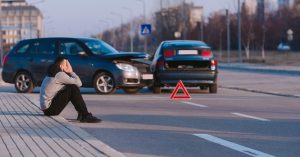 Traffic fatalities rose dramatically last year as we worked to emerge from COVID-19. The National Highway Traffic Safety Administration (NHTSA) has released early estimates showing 42,915 people died in motor vehicle crashes in 2021, up 10.5 percent from 2020. In Massachusetts, early estimates show a 20 percent increase.
Traffic fatalities rose dramatically last year as we worked to emerge from COVID-19. The National Highway Traffic Safety Administration (NHTSA) has released early estimates showing 42,915 people died in motor vehicle crashes in 2021, up 10.5 percent from 2020. In Massachusetts, early estimates show a 20 percent increase.
There were more vehicles on the road last year. The NHTSA reported an 11 percent increase in vehicle miles traveled in 2021 compared to 2020. There was only a slight decline in the fatality rate per mile traveled.
But the projection shows the highest number of traffic fatalities since 2005 – and the largest annual increase in traffic deaths since 1975, when the federal traffic data system began. Across the board, drivers, pedestrians, bicyclists and motorcyclists all faced more treacherous conditions than before the pandemic, even as many traveled less.
Rise in Pedestrian and Bicycle Fatalities
Many of us have been walking more since the pandemic began. It’s nice to just step outside and start getting some exercise. However, the walk can be very dangerous. Traffic may look lighter at times. Open roads seem to encourage drivers to speed and traffic patterns are still highly irregular.
Nationwide, pedestrian traffic deaths increased 13 percent in 2021, while fatal bicycle accidents climbed 5 percent. There was also a 9 percent increase in motorcycle accident fatalities.
Speed-Related Crashes Up 5 Percent
The NHTSA reports a 5 percent rise in traffic fatalities caused by speed-related crashes in 2021. This follows a dangerous 17 percent jump from 2019 to 2020. Overall, speeding is responsible for more fatal crashes now than before the pandemic.
There were also more fatalities in multi-vehicle crashes last year, as vehicles traveled more miles. These fatalities climbed 16 percent in 2021. There was a rise from March to August 2021, then November to December. April 2021 saw the greatest increase in fatalities in multi-vehicle crashes.
Alcohol-Related Crashes Rise
One of the most troubling trends of the pandemic was the rise in drunk driving and injuries. In 2020, there was a 16 percent rise in traffic fatalities stemming from police-reported, alcohol-involvement crashes. This came as workers and students stayed home. In 2021, this trend continued, with an estimated 5 percent increase in these crashes.
More Traffic Deaths Among Seniors
There were fewer traffic fatalities among older Americans in 2020 as more people stayed home or suffered from COVID-19. But last year, as senior citizens (those 65 and older) got back out, there was a 14 percent increase among traffic fatalities.
13 Percent Increase in Traffic Fatalities Involving at Least One Large Truck
In 2021, there was a 13 percent increase in fatalities in crashes involving at least one large truck (one with a gross vehicle weight rating of more than 10,000 lbs). The NHTSA counts both commercial and non-commercial vehicles.
Trucking activity has drastically changed since the start of the pandemic. More of us are ordering groceries, clothing and household supplies from the convenience of our homes and we may see large trucks and delivery vans several times a day.
The NHTSA reports traffic fatalities in crashes involving at least one large truck increased from April to July 2021 and then again from November to December 2021.
Free Legal Consultation – Boston Car Accident Lawyers
Founded in 1992, Breakstone, White & Gluck has been consistently recognized for our results for our clients. Our personal injury attorneys provide experienced and aggressive representation to those injured in car accidents, pedestrian accidents and motorcycle crashes across Massachusetts.
If you or a loved one have been injured by another driver’s negligence, learn your legal rights for seeking compensation for your recovery. For a free legal consultation, contact Breakstone, White & Gluck and at 800-379-1244 or 617-723-7676 or use our contact form.
New Bike Lanes Help, But Massachusetts Drivers Must Still Slow Down and Watch for Cyclists
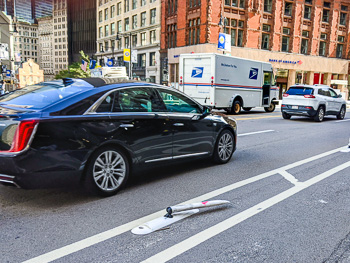
Flexipost down on bike lane at Center Plaza, across from Boston City Hall.
As COVID-19 kept many of us home, Boston and nearby cities built out an impressive 35 miles of new bike lanes in 2020 and 2021, according to a news report.
But, while encouraging safety, bike lanes alone cannot prevent cycling accidents. Drivers still have a responsibility to slow down, travel safely in their lane and use extra caution, especially as they get to know the new infrastructure.
Consider that bike lanes must be a minimum of 5 feet wide under state highway standards. In Boston, the city’s transportation department works to build at least 6 feet wide in areas with high bike traffic and 6 to 7 feet in areas with heavy parking turnover. Then factor in parking, traffic and bus lanes and you have more than covered the widest roads.
Finding New Bike Lanes in Boston, Cambridge and Nearby Cities
If you travel into Boston or Cambridge, you will find several miles of new bike lanes, including both conventional and protected bike lanes.
Conventional bike lanes – also called unprotected bike lanes – are flat lanes which create a designated lane for cyclists using paint and signage. Protected bike lanes are designed to add another layer of safety. These are usually more visible and use physical barriers – such as flexiposts or curbing – to separate cyclists from drivers.
During the pandemic, the City of Boston expanded its bike lane network with protected bike lanes on all roads around the Boston Public Garden. The city is now working to connect key stretches of bike lanes, including at the intersection of Beacon and Arlington streets near the west end of the Public Garden.
Beyond Boston and Cambridge, you can take a drive into Medford, Somerville, Newton or Brookline, among other communities, to see new bike lanes built during the pandemic. Somerville and Medford saw significant bike lane development along Route 28 and the Wellington Bridge, with funding from the state’s Shared Streets and Space Program.
Some of the new protected bike lanes are “quick-build” projects. Keep this in mind as you drive. Cities may now experiment and take flexiposts up and down as seasons and traffic volumes change.
How Boston Drivers Can Avoid Bike Lane Accidents
Now more than ever, it is critical to watch because there are more cyclists out. According to state figures, ridership is up more than 25 percent in many Massachusetts communities as we emerge from the pandemic.
Learn Where Cyclists Are Allowed to Ride
When driving, take a good look at the full road. You may initially notice the traffic lanes, intersections and stop signs. Many drivers, however, overlook the bike lanes, if the road even has them.
If you see bike lanes, consider these a guide. A cyclist may ride in the bike lane. But they may also have to move into the roadway at times to position themselves for a left turn or because the bike lane ends.
When the bike lane ends, a cyclist may choose to stay on the right side of the road or they may attempt to move into the traffic lane. Cyclists are allowed to ride up to two abreast in the traffic lane in Massachusetts. Many cyclists try to avoid this approach to avoid backing up traffic. But you will see this and it is important to give cyclists enough space to make safe decisions.
Drive Slowly
Maintaining a slow and safe speed near cyclists is critical. When you speed, you can easily cross over painted bike lanes or even flexiposts, and you leave yourself less time to respond if cyclists, pedestrians or other drivers make an unexpected move.
Open Car Doors Carefully
Drivers can injure cyclists and pedestrians even after they park. Drivers who open doors without checking, or leave a car door open as they get ready to get out, have caused many dooring accidents and serious injuries to cyclists in the Boston area.
At least 40 states – including Massachusetts – have recognized the danger of dooring and made this a traffic offense, according to the League of American Bicyclists.
The Danger of Parking in Bike Lanes
It is also illegal for drivers to park in bike lanes in Massachusetts under M.G.L. c. 89, § 4D. Drivers have to remember bike lanes are travel lanes for cyclists. If you park in a bike lane and a cyclist is injured as a result, you may be fined by local police, just as you can be if you open a door into a cyclist’s path.
The cyclist could also file a claim against you and hold you financially responsible for their medical expenses, lost wages and other damages.
Distracted Driving Can Be Deadly Near Cyclists
As you drive, look how close you are to cyclists and the bike lane. There is little room for error and it is highly dangerous to pick up your cell phone for any reason. You could veer off the road and into the bike lane, then hit a cyclist. Use your best judgment and wait. Another factor to consider is pedestrians. Both you and the cyclist approaching have a duty to stop and yield to pedestrians at crosswalks and other situations. There is no room for distractions.
The tragedy is at least two cyclists have been killed in distracted driving accidents in Massachusetts since the start of the pandemic.
In August 2020, a driver was reportedly texting and collided into three cyclists traveling along Topsfield Road in Ipswich, according to the Salem News. One of the cyclists later died at a local hospital and police charged the driver.
The criminal case was ultimately resolved last month, when the driver pleaded guilty to negligent motor vehicle homicide, but avoided jail time. The driver’s criminal defense lawyer argued she had texted with a friend earlier about visiting Crane Beach, but just before the crash, she suffered from a gastrointestinal condition and this caused her to take her eyes off the road, leading to the crash.
In Northampton, another driver is facing criminal charges in connection with a fatal bike crash in October 2021. Police allege the driver was using the FaceTime app and ran a stop sign near Northampton High School, then fatally injured the cyclist, according to local news reports. Now, a state legislator is seeking to update the state’s hands-free driving law to specifically ban video broadcasting and vlogging while driving.
Watch for Cyclists and Turn Safely at Intersections
When you stop at an intersection, you may expect cyclists to pull up to your right in the bike lane. They may do so. However, they may also come up behind you or move into the traffic lane to turn left.
Continue to look around your vehicle as you wait at the intersection and use caution when you make right-hand turns. Check your mirrors and blindspot so you can avoid turning right into cyclists and causing injuries. These are called “right-hook” bicycle accidents and they have often been fatal in Boston.
Under Massachusetts law, drivers can be cited for overtaking and passing bicyclists to make a right turn, unless they can turn at a “safe distance” at a “speed that is reasonable and proper,” M.G.L. c 90 § 14. With so much activity at intersections, it is better to just wait for cyclists to turn safely.
At Breakstone, White & Gluck, our attorneys have represented cyclists and families in wrongful death cases resulting from right hook bike crashes at intersections. These are painful experiences made worse because these accidents are preventable if drivers check their mirrors and blindspot for cyclists.
Operators of large trucks are responsible for many right-hook crashes. Truck companies can protect against injuries by providing drivers with proper training and upgrading equipment with sideguards and convex mirrors.
Free Legal Consultation – Boston Bicycle Accident Lawyers
Breakstone, White & Gluck is a strong supporter of safe cycling in Massachusetts and has been recognized by the League of American Bicyclists as a Silver Level Bicycle Friendly Business.
With more than 100 years combined experience, our lawyers fight for the rights of those injured by negligence or wrongdoing in personal injury cases. We have extensive experience representing cyclists who have been injured by negligent driving in the Boston area and across Massachusetts.
If you have been injured in a bicycle accident, learn your legal rights. Call for a free legal consultation and our attorneys will review the facts of your case with you to help you determine if you have a potential claim against a driver to help you with your recovery. Do not hesitate to call; we are experienced at working with both cyclists and family members to address all your concerns and preserve your legal rights in the hours, days and months after a bike crash.
For a free legal consultation, call 800-379-1244 (toll-free) or 617-723-7676 or use our contact form.
Proposal to Strengthen Massachusetts Hands-Free Driving Law By Adding Ban on Recording and Broadcasting While Driving
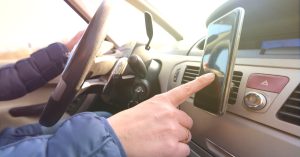
Drivers are not allowed to pick up cell phones under the Massachusetts hands-free driving law, but can quickly tap the device for activation of hands-free mode or GPS.
A dangerous trend has emerged on our roads, cell phones and social media accounts, with the rise of drivers “vlogging,” live-streaming and making video phone calls. In a 2020 survey, more than 20 percent of drivers admitted to recording video on cell phones. This is more than double the response from 2015.
Now, after a cyclist’s tragic death, a local lawmaker is proposing Massachusetts update its hands-free driving law to ban both recording and broadcasting video while driving.
Nationwide, 48 states have banned texting while driving and 24 states have passed hands-free driving laws, according to the Governors Highway Safety Association.
Massachusetts would join four other states which have banned recording and broadcasting as part of their hands-free laws, according to state Sen. Jo Comerford, D-Northampton, who has proposed the legislation.
Sen. Comerford proposed “Charlie’s Law” in the wake of a cyclist’s death near Northampton High School in October 2021. A 23-year-old driver is accused of video chatting on the FaceTime app, then running past a stop sign and striking the cyclist in a fatal bike crash, according to local news reports. The driver now faces criminal charges, including negligent motor vehicle homicide. Meanwhile, state lawmakers held the first hearing on Charlie’s Law earlier this month.
Background on Massachusetts Distracted Driving Laws
Looking to prevent injuries and deaths in car accidents, Massachusetts passed a ban on texting while driving in 2010. After many years of debate, lawmakers reached agreement on a more comprehensive hands-free driving law in 2019.
The Massachusetts hands-free driving law took effect in early 2020 and drivers now face fines for violations, starting with $100 for the first offense.
For third and subsequent offenses, drivers face up to $500 in fines and an insurance surcharge. They must also attend a distracted driving education program.
Under the hands-free law, drivers are only allowed to touch mobile phones and electronic devices to quickly activate hands-free mode, when devices are mounted to a windshield, dashboard or center console. Drivers are still allowed to use voice-to-text commands and make phone calls so long as cell phones are properly mounted.
As it stands, the Massachusetts hands-free driving law does not specifically ban drivers from making video conference calls or vlogging activities, such as recording or live broadcasting video of one’s self while driving to post on social media sites. As long as cell phones are mounted, drivers are not violating the law.
Drivers may be cited or charged if police investigate a car crash and find they violated another traffic law, such as a marked lanes violation. But updating the hands-free law – which is a primary enforcement law – may allow police to stop and cite drivers they see using cell phone video features before a crash happens.
Sen. Comerford has proposed S. 2733, “An Act Prohibiting Video Recording or Broadcasting While Driving.” The bill proposes adding language to the existing law stating no operator shall record or broadcast video of themselves on a mobile device, with a few exceptions.
- Drivers would still be allowed to record or broadcast video in an “emergency or exigent circumstance” or “when it is so clearly in the public interest as to override the public safety purpose of this sentence.”
- Dash cams can still be used to record traffic conditions or passengers in a vehicle, but they must be mounted. This allows commercial drivers, Uber and Lyft drivers to continue recording passenger behavior.
More Than Twice As Many Drivers Admitted to Recording While Driving in 2020
In its 2021 Driving While Distracted study, State Farm Auto Insurance reported 22 percent of drivers admitted to recording behind the wheel in 2020, compared to 10 percent in 2015.
Younger drivers were more likely to engage in this behavior:
- Nearly half – 44 percent – of drivers in the 18 to 29-year-old demographic admitted to recording video while driving.
- More than a third of drivers age 30 to 39 admitted the same.
This was not the only increase. State Farm reported 89 percent of drivers – or nearly 9 out of 10 – admitted to engaging in one of the 14 distracted driving behaviors covered in its online survey.
One troubling note was most drivers in states which had passed hands-free driving said they were aware of laws, but one in five were not informed. Six percent of the drivers even said their state did not ban handheld cell phone use.
Contact Breakstone, White & Gluck For a Free Legal Consultation – Boston Personal Injury and Car Accident Attorneys
At Breakstone, White & Gluck, our Boston personal injury lawyers offer more than 100 years combined experience representing those injured by negligent and reckless driving. Our attorneys work with clients throughout the Boston area, including those who live and work in Boston, Cambridge, Somerville, Everett, Brookline, Arlington and Quincy.
If you have been injured in a car accident caused by another driver’s negligence, you may require medical care and have to miss time at work. You may have many questions. For a free legal consultation, contact Breakstone, White & Gluck at 800-379-1244 or use our contact form. Our attorneys will review the facts of your case with you and help you determine whether you have a potential claim.
Brain Injury Awareness Month: Would You Recognize the Symptoms of a Concussion?
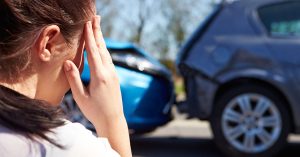
After a car accident is a critical time to seek medical care and screening for a concussion.
March is Brain Injury Awareness Month. Nearly 12 years ago, Massachusetts lawmakers passed legislation to develop a concussion safety program for high school athletes. Before they play, student-athletes and their parents must now learn about concussion symptoms. If students are injured, they must follow step-by-step guidelines for recovery. The goal is to make sure students fully heal from concussions.
Just as students have learned about concussions, Brain Injury Awareness Month offers others a chance to learn.
These are essential lessons, helping us care for ourselves and our families. The sooner one identifies potential concussion symptoms, the sooner they can seek a medical evaluation and begin rest and recovery. Below, we write about concussions, symptoms and high-risk situations when one may consider seeking a medical evaluation as a precaution.
What is a Concussion?
A concussion is often called a mild traumatic brain injury or “mild TBI.” A concussion may follow a bump, blow or jolt to the head, or a hit to the body that causes the head and brain to move quickly back and forth, according to the Centers for Disease Control and Prevention (CDC).
There may be no visible bruising, skull fracture or head injury, but the sudden movement can impact the brain’s function.
When one suffers a concussion, they may experience a range of symptoms impacting their health. It can be very difficult to read the symptoms, which may include one or more symptoms:
- headaches
- memory loss
- feeling groggy
- difficulty sleeping (or sleeping too much)
- mood and behavior changes
- balance problems
- slurred speech
- dizziness
- nausea or vomiting
- confusion
- decreased coordination
- sensitivity to light
- irritability
- In adults, one pupil may appear larger than the other.
Symptoms may appear right away or in the hours after a concussion, or they may be delayed a few days and weeks.
One misconception is a person will lose consciousness if they suffer a concussion. This is not always true. In fact, on the sports field, one coach said athletes only lose consciousness in about 10 percent of all concussions cases (Source: Heads Up Video: What is a Concussion?, CDC).
When to Consider Seeking Medical Care
As important as it is to learn about concussion symptoms, there are also times when you should just receive medical care as a precaution. This includes after children’s injuries, sports injuries, car accidents, falls or bicycle accidents.
Children and Student-Athletes

Respond promptly if you suspect your child has sustained a concussion.
Start learning now before you suspect a possible injury. Look to your child’s pediatrician and school for information on concussion prevention, symptoms and how to respond to a potential concussion. This is important because your child’s brain is going to support them throughout their life and by understanding a few basics, you can minimize their risk of suffering an injury. But if your child does suffer a concussion at some point, what you learn now will help you be ready to help them receive care and fully heal before they start their full routines up again. To help you get started, read our page on the Massachusetts sports concussion safety law and helmet laws for children. Another resource is the CDC Heads Up web page.
Motor Vehicle Crashes
Motor vehicle crashes are a leading cause of concussions and traumatic brain injury. The violent force of a collision can cause many injuries, from whip-lash to broken bones and head injuries. One can suffer a concussion in crashes at any speed and unlike other types of injuries, see no visible signs. One does not have to hit their head to sustain a concussion.
It can be hard to know whether you were injured after a car accident, so it is best to be proactive and call your primary care physician or visit a hospital emergency room.
Falls
When someone falls and hits the ground, they can suffer a concussion and it may be hard to recognize the signs, especially if the person is alone.
Older adults and younger children are more vulnerable to suffering falls. They are also at the highest risk for going without treatment. Consider how difficult it is for many adults to recognize they may have suffered a concussion; then think about young children, who may have limited speech. When it comes to young children, look for signs of discomfort, such as constant crying, trouble sleeping or the child may not eat. Contact your child’s pediatrician so they can advise you on the next step.
As for older adults, the CDC reports more than 34,000 adults age 65 and older died in falls in 2019. Many of these falls involved TBI and broken bones.
If you have an older relative or friend, talk to them about the importance of seeking medical care after any type of fall. Immediate treatment can help them identify whether they have sustained a concussion or other injuries. This puts their primary care physician in a good position to help them manage their recovery, with their full understanding of the person’s medical conditions and what medications they take.
Bicycle-Related Head Injuries
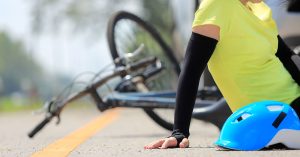
Cyclists can suffer many serious injuries in a crash. Always visit a hospital emergency room as a precaution.
Make a plan for safety. Should you ever fall on your bike or be involved in a bicycle accident, commit to seek immediate medical care right away. Have a doctor evaluate whether you sustained a concussion.
Medical care is critical for cyclists. In addition to concussions, cyclists are vulnerable to suffering broken bones around the face, jaw and fractured teeth in crashes, along with other injuries. While you may try to treat your own pain, a medical exam is the best first step to determine the source of all your swelling and injuries.
As a cyclist, you can take an important step and protect against head injury by wearing a helmet. When cyclists wear helmets, the reality is they may still suffer injuries in a collision. But cyclists are more likely to survive a bike crash without the cognitive, physical or mental complications of a severe and traumatic brain injury. This is critically important because it improves one’s long-term chances for making a full recovery.
According to the CDC, helmets reduce the risk of head injury by absorbing much of the impact energy from a fall or a bicycle accident. Helmets protect the skull and brain from more severe injury.
After a Concussion, The Importance of Follow Up Medical Care
Another time to consider medical care is in the days, weeks and months following your initial treatment for a concussion. It is important that you fully heal. If you suffer a second concussion while you are still recovering, you are at risk for second impact syndrome and long-term complications.
The CDC reports many concussions are not fatal. Many people recover from concussions within a few weeks, with rest, plenty of sleep and patience.
But some injuries take more time. The National Institute of Health reports one study found nearly a quarter of patients struggle with physical and mental problems related to a concussion a full year later. Another study tracked 831 patients at 11 major trauma centers across the country and found not every patient receives follow-up care.
- Within three months of their injury, fewer than half of the patients – 44 percent – had followed up with a health care professional.
- Notably, when patients visited medical centers with dedicated TBI clinics, they were more likely to receive follow-up care.
- Patients who had more serious injuries (those who had CT Scans that showed tissue damage) had a higher rate for follow-up care, but even then only 61 percent sought follow-up care.
There are many reasons patients may not follow up after a concussion. This study noted just 42 percent of patients received educational materials as they left treatment; just 27 percent received a follow-up call from the hospital.
Make it your priority to follow up with your primary care doctor for as long as it takes.
Follow your doctor’s instructions for every phase of your recovery: when you are ready to drive and go back to work. Follow any limits your doctor sets, such as restricting cell phone use.
Take the family member along to your doctor’s appointments. This gives your loved one a chance to learn about the symptoms of a concussion and how you should progress.
Ask a loved one to play an active role in your treatment and help you observe your recovery. You may need help tracking activities at times, such as how many hours you sleep or how many times you contact your doctor with concerns. Write down any medical instructions you receive, or print messages from your online medical records, so you and your loved one can review them together over the next few months.
Free Legal Consultation – Boston TBI Attorneys
At Breakstone, White & Gluck, our Boston personal injury lawyers have over 100 years combined experience representing those who have been seriously injured or killed by the negligence or wrongdoing of others.
Our lawyers have extensive experience representing clients who have suffered concussions and traumatic brain injuries as a result of someone else’s negligence, helping them recover compensation for their medical expenses, loss of future income and other damages.
Our attorneys represent clients in Boston, Cambridge, Arlington, Somerville, Everett, Quincy, Milton and across Massachusetts. If you have been injured, learn your legal rights. For a free legal consultation, call 800-379-1244 or 617-723-7676 or use our contact form.
More Pedestrian Accidents Were Fatal in Massachusetts Last Year
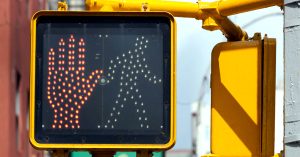
Dangerous roads: There were more pedestrians killed in traffic accidents in Massachusetts during 2021.
As the New Year begins, Massachusetts closes the door on a very dangerous year for pedestrians.
There was disappointing news on the state’s roads, as traffic fatalities rose 19 percent over 2020, according to MassDOT preliminary data (January 4, 2022). But those who walked faced the most risks. Pedestrian fatalities increased a stunning 38 percent, coming in near pre-pandemic levels.
Statewide, 76 pedestrians were killed in motor vehicle accidents last year, compared to 2019, when there were 78 deaths. The state recorded 55 pedestrian deaths in 2020, when traffic volumes fell early on during the Massachusetts “stay-at-home” and essential worker orders.
Most concerning is when a driver injured a pedestrian last year, the encounter was more often fatal. According to the January 4th data, in Massachusetts, you had a greater chance of surviving a pedestrian accident in 2019 than you did last year.
The state recorded about 2,197 pedestrian accidents in 2019. About 3.5 percent of these resulted in fatal injuries. Meanwhile, in 2021, there were 1,520 reports of motor vehicle accidents involving pedestrians. Five percent of these crashes claimed a pedestrian’s life.
These are preliminary numbers from the MassDOT. It is important to remember these could rise in future days and weeks.
Drivers Have a Duty to Decrease Speed At Times for Safety
Drivers may operate recklessly or make unsafe choices, such as speeding or running a red light, during any season. Come winter, when the snow and ice arrive, these decisions can be deadly for pedestrians. Drivers may have less time to make corrections.
In Massachusetts, drivers have a duty to use reasonable care and this includes traveling at a safe speed.
Drivers have a duty to observe the posted speed limit as the maximum that is “reasonable and proper.” But they must use good judgment and lower their speed for safety, “when a special hazard exists with respect to pedestrians or other traffic, or by reason of weather or highway conditions.” M.G.L. c. 90, § 17.
This describes many winter driving situations.
Still, as a pedestrian, you should expect drivers may speed and approach you too closely in the winter. While you cannot control this, you can try to stay visible. When drivers see you, they may recognize their responsibility to slow down as appropriate for the road conditions.
Safety Tips for Pedestrians During the Winter Months
Use Sidewalks. Sidewalks are an essential safety tool in the winter. Always use sidewalks and stay inside the snowbank when waiting for crosswalk signals.
Consider Yourself a Pedestrian. Most of us are a pedestrian at some point in the day. You may consider yourself a pedestrian if you walk to work or take your children to school. Or if you walk for exercise. But you are also a pedestrian when you walk through the grocery store parking lot, drop off a package at the post office or wait for a bus or rideshare. Recognize this and take steps to protect yourself just as you would if you were walking to work or around your neighborhood.
One challenge is pedestrians do not have the same tools as drivers, such as safety mirrors. You may not be able to see drivers up high in trucks or work vehicles. Because of this, it is important to use crosswalks and try to make eye contact with drivers before crossing streets, intersections and parking lots. Again, when drivers see you, they are more likely to slow down or look for you before they turn and this is even more critical when snow is taking up room on the roads.
Stand Out in Bright Colors. Now is a good time to add a few bright colors to your wardrobe. Wear neon or reflective clothing to help drivers see you. This is a simple step with a big return because it encourages drivers to maintain a safe distance.
Look for Crosswalks with Traffic Signals and Safety Signs. Look for crosswalks with traffic signals, which are designed to guide drivers and pedestrians at all hours, through all types of weather. Keep in mind you may not be able to see traffic signs or paint markings after winter snowstorms.
Stay Away from Plow Trucks! Stay away from plow trucks on roads or parking lots. Grocery store parking lots are full of hazards in the winter because they see so much traffic and may need frequent plowing. You may find snowplow drivers are continuously at work. It is never safe to approach a snowplow, even parked vehicles. The driver could make a sudden decision to back up.
Free Legal Consultation – Boston Personal Injury Lawyers
Founded in 1992, Breakstone, White & Gluck has been consistently recognized among the top personal injury law firms in Boston and across Massachusetts. Our lawyers specialize in representing those injured by negligent driving and we provide experienced and aggressive representation to pedestrians and families after serious crashes and crosswalk accidents.
If you have been injured, learn your legal rights. For a free legal consultation, contact Breakstone, White & Gluck of Boston at 800-379-1244 or 617-723-7676 or use our contact form.
Deck the Halls, But Decorate Safely

Immediately replace holiday decorations and power appliances that are in poor condition. Another year of use could result in injury.
Though a time for joy, the holidays can also set the stage for potential injuries, as we rush, stress, decorate and wrap. Surprisingly, you may discover some of the most dangerous hazards right in your own home, among the holiday decorations and boxes you pull of storage to deck the halls.
While colorful and festive, holiday decorations contribute to many injuries each year. During 2019, nearly 15,000 people were injured in holiday decorating incidents and treated in emergency rooms, according to the Consumer Product Safety Commission (CPSC). Nearly half of these injuries involved falls. Many others are injured each year after the decorations are hung, by defective or poorly-made products or decorations that are set up unsafely.
Unlike some situations, you have control of your home and can take steps to protect yourself, your family and holiday guests.
Start by simply walking around your home and checking your holiday decorations and your Christmas tree, if you have one. Make sure all your decorations are out of reach of young children and put away all tools, such as ladders and hammers, or boxes you may have left out while decorating.
Watch for unsafe products, such as those which arrive in questionable packaging or contain broken or small parts. Manufacturers have a responsibility to design products and provide reasonable warnings for safe use. There can be a high cost when manufacturers or others in the supply chain neglect their responsibilities in the rush to sell, or when individual sellers on Craigslist or Facebook Marketplace offer used goods without the original packaging. But it can happen and ruin a family’s holiday – unless you recognize the risk and act to prevent injury.
Use Caution While Hanging Holiday Decorations
Still have some decorating to do? Remember not to rush. During a season of merry and bright, you want to be safe and avoid injury. Holiday decorating can cause a range of injuries, from passing muscle strain to broken bones, though injuries can be much more serious, resulting in head injuries and even permanent disability. At a minimum, many people experience some muscle strain the next day after reaching and climbing. Planning can help!
So make a decorating plan. Team up with a family member or a friend so you have help carrying heavy boxes or using ladders or step stools.
Consider whether you are physically up for holiday decorating. As you get older, you may not be able to take on the same physical challenges. Acknowledge this before you start.
While you may be thinking, “Bah humbug,” you can still decorate. Just make a few adjustments for safety or to account for your late start. You can hang fewer holiday lights and hang them lower so you can stay off ladders, which are associated with many fall injuries during the holiday season.
Decorators of all ages should consider the cold weather. Even without snow or ice, you face a greater risk for muscle strain and injury during cold weather. It is never safe to climb a ladder in snow, ice, rain, winds or at night.
Water Your Christmas Tree Regularly
If you celebrate Christmas, your tree is the center of your holiday season, where you gather for family photos. But you should only purchase a live tree if you are home and have time to care for it.
Just as they bring joy, Christmas trees can cause devastation if they dry out and catch on fire. Each year, fire departments respond to an average of 160 Christmas tree fires across the U.S., resulting in injuries, deaths and millions of dollars in direct property damage, according to the National Fire Protection Association. These experiences can change a family and the holidays forever.
If you have already brought your tree inside, you may have cut 2 inches off the bottom before placing it in the tree stand. Now, your concern is watering the tree.
Regularly water your Christmas tree and keep it away from fireplaces and heating devices, which can accelerate drying out. The National Christmas Tree Association recommends that families check their tree daily and make sure the water level does not fall below the base of the tree.
Your Christmas tree stand is one of your most important holiday decorations in terms of safety. Choose one which can hold enough water to support your tree’s needs throughout the year. As a general rule, the association recommends stands provide one quart of water per inch of stem diameter.
If you are not up for a live tree, go artificial. Make sure your artificial Christmas tree is marked “flame-resistant.”
Watch for Defective Products and Check Holiday Extension Cords for Safety
Closely examine holiday decorations and equipment before you start decorating. Your trusted tools and supplies may have been recalled for safety since your last use or may not work well with newer products you have purchased.
Check ornament boxes for cracks; make sure ladders and foot stools are in good working condition, if you have to use them. Extension cords should be free from damage and cracks.
This is easy to forget. Many of us reach for extension cords after we start setting up decorations, not first. But here are a few points for safety on extension cords:
- Extension cords should be tested by a nationally recognized testing laboratory, such as Underwriters Laboratories (UL), Intertek (ETL) or CSA Group Testing and Certification. Similarly, holiday lights should also be tested.
- You should only use one extension cord at the most, so measure and buy one that meets your needs.
- Make it a habit to check for safety recalls before you plug your holiday extension cords in. Just visit www.cpsc.gov and search for extension cord recalls
- Replace your extension cords every few years. You trust these cords to light up your holiday and protect your family and home over the years, yet you expose them to more wear and tear than other products when you string them around your tree, furniture and take them in and out of storage each year.
Keep a Safe Home for Holiday Guests and Children
Consider what may be in a child’s reach or limit an older guest’s mobility. Move ornaments and decorations with small pieces and sharp edges out of reach. Remember children are curious and may pull at decorations or small broken lights found under a tree or plastic packaging you may have dropped while wrapping gifts. A child could find these, put them in their mouth and choke or suffocate – the worst thought for the holiday season.
Look beyond your holiday decorations as well. You may not be able to see all the hazards, so think about how your home products are powered. For example, flashlights and electric holiday lights may contain small button batteries, which a young child could find and swallow. So may your remote controls, including those you use to manage your holiday lights, and these can be too easy for children to open. You may treasure the holiday cards you receive, but these can also tempt children. Tuck away cards with removable pieces.
It is critical to think about fire prevention, especially before you invite guests into your home. Take a moment to test your smoke alarms. As we mentioned above, keep holiday decorations away from working fireplaces and stoves. Turn these appliances off when you have guests over and skip candle use for holiday ambiance or at the holiday meal.
Finally, we often hang or position decorations near entrances or hallways where people can enjoy them. This can bring joy, but block access to essential exits if a fire ever broke out. It is best to enjoy these somewhere else and keep all entrances and hallways clear.
Free Legal Consultation – Boston Personal Injury Lawyers
Breakstone, White & Gluck specializes in personal injury law, representing those who have been injured or killed by negligence across Massachusetts, including in Boston, Cambridge, Somerville and Arlington.
With more than 100 years combined experience, our lawyers have been recognized among the top personal injury attorneys in Massachusetts and New England. We represent clients in all areas of personal injury law, including injuries and wrongful death resulting from defective products.
If you have been injured by someone else’s negligence, learn your legal rights. For a free legal consultation, contact Breakstone, White & Gluck at 800-379-1244 or use our contact form.
Don’t Rush; Reminders to Help Massachusetts Families Buy Safe Holiday Toys in 2021

Don’t rush your holiday toy shopping. Take time to read and follow age-appropriate labels before you buy toys.
Many of us are feeling quite stressed about holiday shopping as we watch the news. Still, when you shop for a child, safety is essential. Slow down and look for a fun, safe and age-appropriate toy that will bring joy, not injury, into your home.
Read Age-Appropriate Warning Labels, Toy Packaging and Online Descriptions
You may think you are buying a safe because the toy was featured on a morning news program or has received top reviews online. But despite your best intentions, you may not actually be purchasing the same toy. To avoid buying a so-called counterfeit toy, look for reputable sellers, such as department stores. Try to purchase from brick-and-mortar stores.
Before purchasing or at home, closely examine the packaging on the toy and make sure it matches the manufacturer’s online description. If you purchased the toy online, the toy packaging should also match the description on Amazon or the online marketplace. Once the toy arrives, open and inspect the box contents.
Everything should be consistent, including the age-recommendation labels.
Check for Toy Recalls
The packaging is a tool to help you shop, as is the CPSC website, which you can check for toy safety recalls. In addition to recalling toys, the CPSC has also recalled many inclined infant sleepers over the past two years. Last summer, the commission approved a new federal safety standard for infant sleep products which will take effect in mid-2022. Here is one of our recent blogs on infant sleep products.
U.S. Toy-Related Injuries and Deaths by Age 2018-2020
No one wants to think about the possibility of a child suffering an injury while playing with their own toys. Yet this is a risk in when so many toys are sold online through Amazon, Ebay and other online marketplaces. Independent sellers can sell on these sites or quickly build their own websites, optimize them in the search engines, then close sites down.
Between 2018 and 2020, 50 children were killed in toy-related accidents across the U.S., according to CPSC data released in May 2021. Many children suffered suffocation and other injuries in accidents involving toys with small parts, balls, stuffed animals or accessories. Two children drowned on water toys. Seven children died in accidents involving non-motorized scooters and two were killed on nonmotorized riding toys.
In 2020, nine children were killed and nearly 150,000 children age 14 and younger were treated for toy-related injuries in hospital ERs. Here is a breakdown of toy-related injuries by age during 2020:
- Children under 5 suffered 40 percent of all toy-related injuries.
- Children age 12 and younger suffered 73 percent of toy-related injuries.
- Children age 14 and younger suffered 75 percent of toy-related injuries.
Common Toy Shopping Mistakes
As we have discussed, you can reduce the risk of injury in your household by reading age recommendations and carefully inspecting toys and packaging. But you can also challenge yourself if you have these thoughts:
Buying Holiday Toys Because Just They Are Available or Priced Right
Earlier this month, the Toy Association shared positive news: 76 percent of parents surveyed said they read age recommendations before buying toys.
However, many can be swayed. About 65 percent of parents said they may buy a counterfeit/knock-off toy if their first choice was unavailable. Meanwhile, 63 percent said they could be influenced by a lower price.
Buying Outside Age-Recommendations for Toys
“This toy is marked age 8 and older, but my 5 ½ year old is up for challenging toys .” Sound familiar? The Toy Association reports 68 percent of parents share this thought and would buy a toy outside age recommendations.
Consider age-recommendation labels an important tool, designed to protect your child from choking, an eye or head injury or a broken bone. Age recommendations are not arbitrary; they are based on a toy’s performance under federal toy safety requirements.
For example, toys with small parts or balls have to undergo the “small parts cylinder” test. The cylinder has a diameter of 1.25 inches, with a slanted bottom opening 1 to 2.25 inches. If a toy or small part passes through the cylinder, it has to carry an age-warning label that states, “Choking Hazard – Small Parts. Not for Children Under 3 Yrs.” Read more about the small parts regulations for toys.
Read more in our Project KidSafe toy safety series.
Free Legal Consultation – Boston Product Liability Attorneys
Founded in 1992, Breakstone, White & Gluck has recovered millions of dollars in compensation for victims of negligence and wrongdoing in Massachusetts. Consistently recognized by Super Lawyers and Best Lawyers, our personal injury lawyers specialize in product liability, holding companies responsible for injuries and wrongful death caused by defective products, toys and vehicles.
Breakstone, White & Gluck is located in 2 Center Plaza in Boston, across the street from the Government Center T stop and Boston City Hall. If you have been injured, Breakstone, White & Gluck offers a free legal consultation. Learn your legal rights by calling and speaking with one of our attorneys today at 800-379-1244 or 617-723-7676 or use our contact form.
New Cars May Get Technology to Help Detect and Reduce Drunk Driving
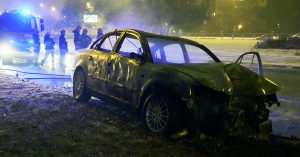
Automakers may soon have to build cars with technology to work toward stopping drunk driving crashes.
The $1 trillion infrastructure bill is being called the most important legislation in more than 40 years in the work to stop drunk driving accidents, injuries and deaths.
After a long pandemic, the infrastructure bills calls for expansive funding across all areas of transportation, including airports, public transit, roads, bridges, bike lanes and pedestrian improvements.
The infrastructure bill also includes new safety mandates for automakers, including that new cars be built with technology to detect and reduce drunk driving and for rear-seat reminders to alert parents that a child has been left behind.
The U.S. House of Representatives passed the federal Infrastructure Investment and Jobs Act on Friday, sending the legislation to President Joe Biden’s desk. The U.S. Senate had already approved the bill in August.
“Single Most Important” Legislation to Stop Drunk Driving Accidents
Mothers Against Drunk Drivers called the infrastructure bill the “single most important legislation” in its 41-year history of working to stop drunk driving tragedies.
Drunk driving kills about 10,000 people each year on U.S. roads, according to the National Highway Transportation Safety Administration. This accounts for roughly 30 percent of all traffic fatalities.
The infrastructure bill calls for all new cars to comply with an advanced drunk and impaired driving prevention technology standard. The legislation does not specify what the technology will be.
If the president signs the bill, the NHTSA will be charged with finalizing rules for implementing a technology within three years. Automakers will have an additional two years to incorporate the changes into the production.
Mothers Against Drunk Driving has long advocated that states make breathalyzers mandatory sentencing for those who have been convicted of drunk driving.
The Washington Post interviewed a few experts who said to expect more passive technologies than a breathalyzer.
Potential technologies could work around breath or blood sensors, or cameras.
The NHTSA has worked with the Automotive Coalition for Traffic Safety (ACTS) for more than 10 years to develop technologies that discretely detect alcohol on drivers’ breath.
Drunk Driving Accidents and Injuries in Massachusetts
In Massachusetts, drivers who operated under the influence of alcohol killed 120 people in 2018 (Source: MADD). As with the federal numbers, this represents about a third of all traffic fatalities across the state that year.
Drunk driving accidents are preventable if drivers remember their responsibilities. Massachusetts drivers have a responsibility to use reasonable care on the roads. Operating under the influence is both against the law and negligent if you cause a crash resulting in injury.
Drivers also have a responsibility not to operate while impaired by drugs, including marijuana, which was legalized in Massachusetts in 2016.
Free Legal Consultation – Boston Car Accident Lawyers
Founded in 1992, Breakstone, White & Gluck is a top-rated Boston law firm that specializes in representing clients in personal injury and car accident cases. We have expertise in representing victims and families of drunk driving accidents in claims against drivers and in Massachusetts liquor liability claims involving third parties.
Our firm stands out for our experience. Each of our partners offers more than 30 years of experience representing clients in Boston and across Massachusetts.
For a free legal consultation, contact Breakstone, White & Gluck at 800-379-1244 or 617-723-7676 or use our contact form.
Take a Simple Step for Safety: Test Your Smoke Alarms When You Set Your Clocks Back This Weekend

Protect your family and home. Test your smoke alarms when you set the clocks back for Daylight Saving Time on Nov. 7.
Stay vigilant about smoke alarms and protect your family this winter. This coming Sunday – November 7th – Daylight Saving Time ends. As you set your clocks back, we encourage you to also test your smoke alarms and carbon monoxide detectors.
It is critical that your smoke alarms work as we approach winter, when we spend more time indoors, cook for the holidays and there is a greater risk for home fires and fire injuries.
Half of All Massachusetts Fire Deaths Occur in Homes Without Working Smoke Alarms
In 2020, half of all Massachusetts fire deaths occurred in homes without working smoke alarms, the state fire marshal’s office announced earlier this year. This was based on preliminary data.
End-of-year data showed there were 29,641 fires across Massachusetts in 2020, a 16 percent increase over 2019. The number of civilian deaths rose from 39 in preliminary data to 44, up from 42 in 2019. There were 245 civilian injuries and 594 fire service injuries in 2020. Smoking was the leading cause of residential fire deaths in Massachusetts, followed by electrical and cooking fires.
The traditional reminder has been to replace your home’s smoke alarm batteries twice a year – at the start and end of Daylight Saving Time. You should still do so if your smoke alarms operate on regular batteries.
But in 2016, the state of Massachusetts updated the fire safety requirements, steering more homeowners toward newer smoke alarms designed to last 10 years without a battery change. So not everyone needs to change their smoke alarm batteries.
Testing is still essential. If a fire breaks out, you may have seconds to escape and your smoke alarm has to work for you, your family, loved ones and roommates. Commit to test your smoke alarms and carbon monoxide detectors monthly and twice a year when you change the clocks for Daylight Saving Time. This is a simple step – just press the test button.
Read Your Product Manual and Learn the Sounds of Your Smoke Alarm
Read your smoke alarm product manual. Make sure you recognize how the alarm sounds – when it chirps to alert you of failing batteries and in an actual emergency. If you do not know, search for the product information online or call the manufacturer. The Massachusetts State Fire Marshal’s office also shared safety tips as part of Fire Prevention Week earlier this month. The theme was “Learn the Sounds of Fire Safety,” the sound of your smoke alarms.
Involve other family members in this, especially older adults. Those 65 and older are highly vulnerable when fires break out, accounting for more than 40 percent of all fire deaths in Massachusetts during 2020, according to the state fire marshal’s office. Older adults may seem healthy, but they may suffer from a medical condition they haven’t shared or side effects to medication. Another potential barrier is untreated hearing loss.
One in three people between age 65 and 74 suffer from hearing loss, according to the National Institute on Aging. When they get older, nearly half of all adults age 75 and older have difficulty hearing. Step in and help older adults. Offer to take them to their primary care doctor and learn about smoke alarms for those who are deaf or have difficulty hearing.
Check for Smoke Alarm Recalls
Unfortunately, like other products, there are times when smoke alarms are recalled due to defect. In May 2020, the Consumer Product Safety Commission announced the recall of more than 220,000 Kidde TrueSense Smoke Alarms and Combination Smoke/Carbon Monoxide Alarms. These alarms were newer models, sold between May 2019 and September 2020.
When you test the batteries at Daylight Saving Time, you can check the Consumer Product Safety Commission (CPSC) website for smoke alarm recalls. Take time for this, even if you have registered your smoke alarm with the manufacturer. While you are there, check for product recalls involving unsafe winter heating products, including electric blankets, space heaters, children’s pajamas and other products. This is an easy but important step for safety. If you own any of these products, take the recall seriously. Remove the defective product from your home now so no one reaches for it on a cold night.
One Survey: Many Americans Are Not Testing Smoke Alarm Batteries
While this is a simple step, not everyone is testing smoke alarms. Earlier this year, a Consumer Reports survey found roughly one-third of all Americans could not recall when they last tested their home’s smoke alarm. About 25 percent could not recall replacing their smoke alarm batteries, while more than half could not remember when they had installed the devices. But this doesn’t have to be the case. You can easily test your smoke alarm and pull out the product materials right now.
About Breakstone, White & Gluck – Boston Personal Injury Lawyers
At Breakstone, White & Gluck, our Boston personal injury lawyers have over 100 years combined experience representing those injured in premises liability accidents, construction accidents, structure fires and fires caused by landlord neglect. Our attorneys have represented clients, including college students, tenants and their families after serious injuries and wrongful death in fires.
If you or a loved one have been injured or killed in a fire, learn your legal rights. Contact our attorneys at Breakstone, White & Gluck at 800-379-1244 or 617-723-7676 or use our contact form.


